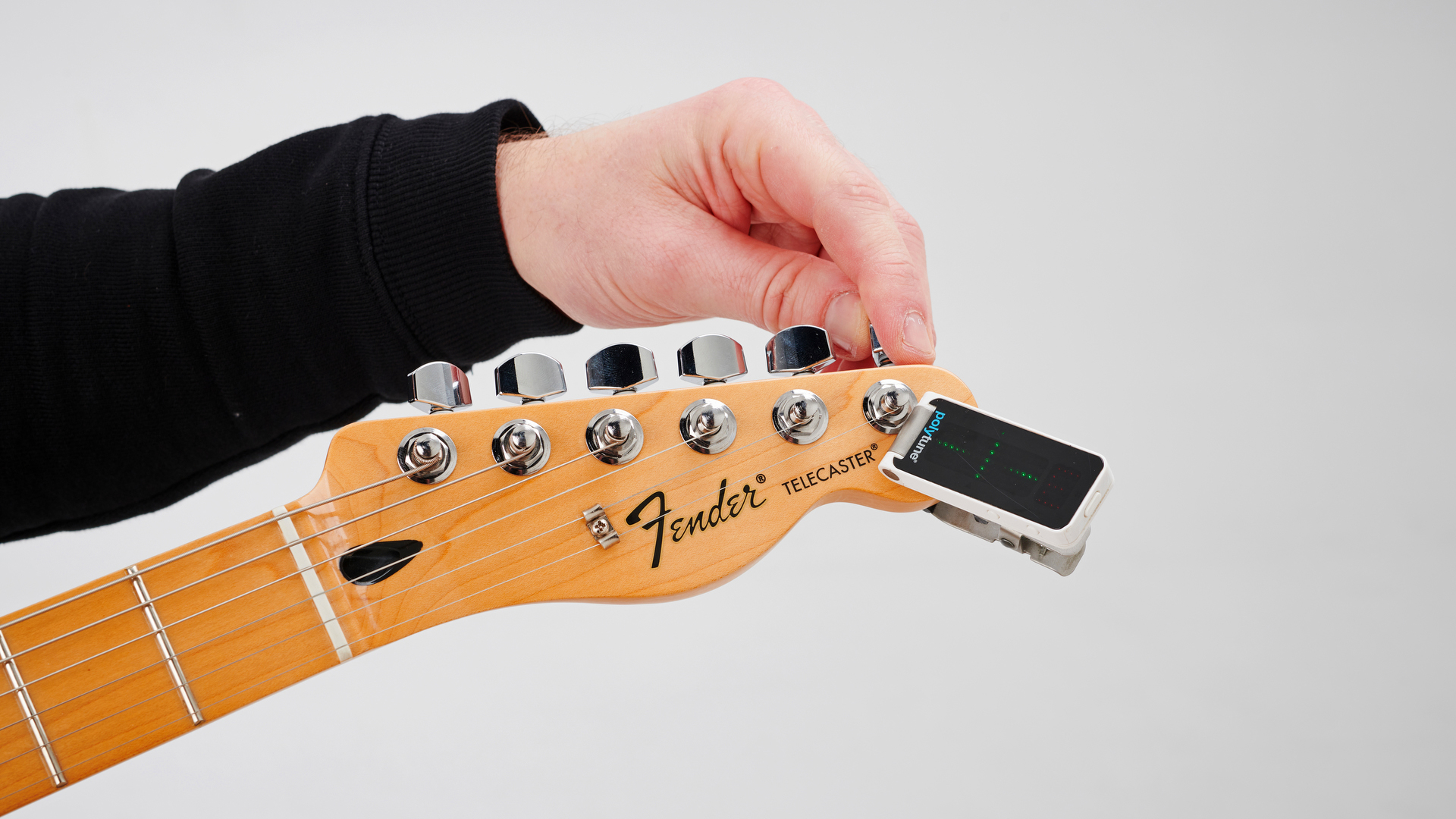
Everything starts with tuning; and if you're a guitarist it's a burden you have to accept. Pianists? They have it easy! Set and forget. But every time you pick your guitar up to play you'll need to check it's in tune. So invest in a decent headstock tuner and pedal tuner. But what if your acoustic or electric guitar won't stay in tune for long?
It's a very common issue and there's no one answer because guitars are all about variables. But there are definite factors and issues that can cause and even combine to make keeping your guitar in tune more challenging that it should be.
It's not necessarily a case of replacing your guitar's tuners
It's not necessarily a case of replacing your guitar's tuners either – smoother action doesn't equate to stable tuning. The issues may well lie elsewhere, and often do in my experience.
I'm going to look at some of the ways you can minimise tuning issues on your guitar, and even get ahead of them. Because if your guitar isn't in tune you'll never sound good.
Loose machine heads
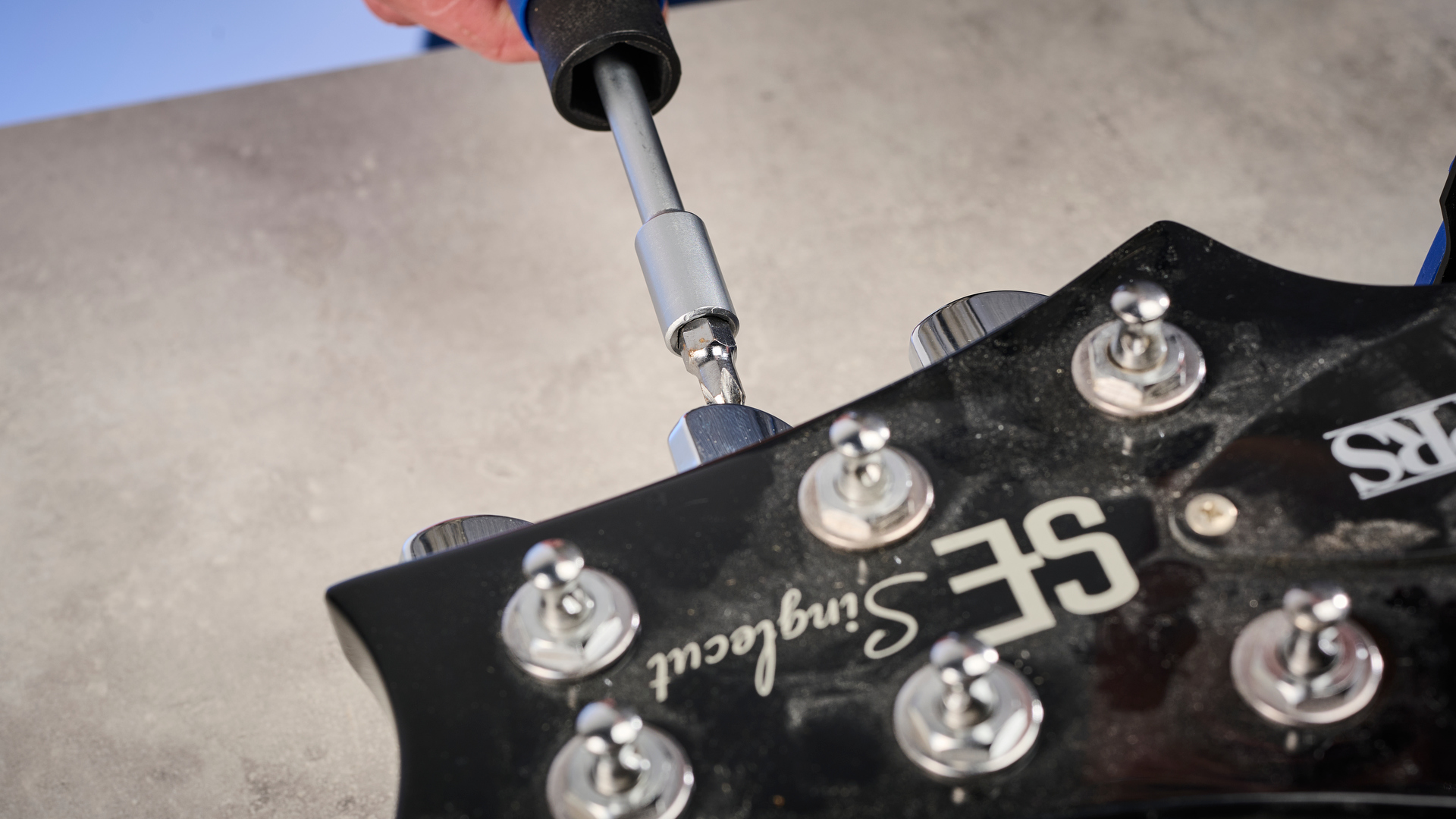
We're starting with something that might not seem to be an obvious cause of unstable tuning but should always be on your check list. If the nuts that secure your tuner posts loosen over time, or the screws that some tuning buttons have get too loose, the hold on the string is compromised. The former can also contribute to unwelcome rattling when you play.
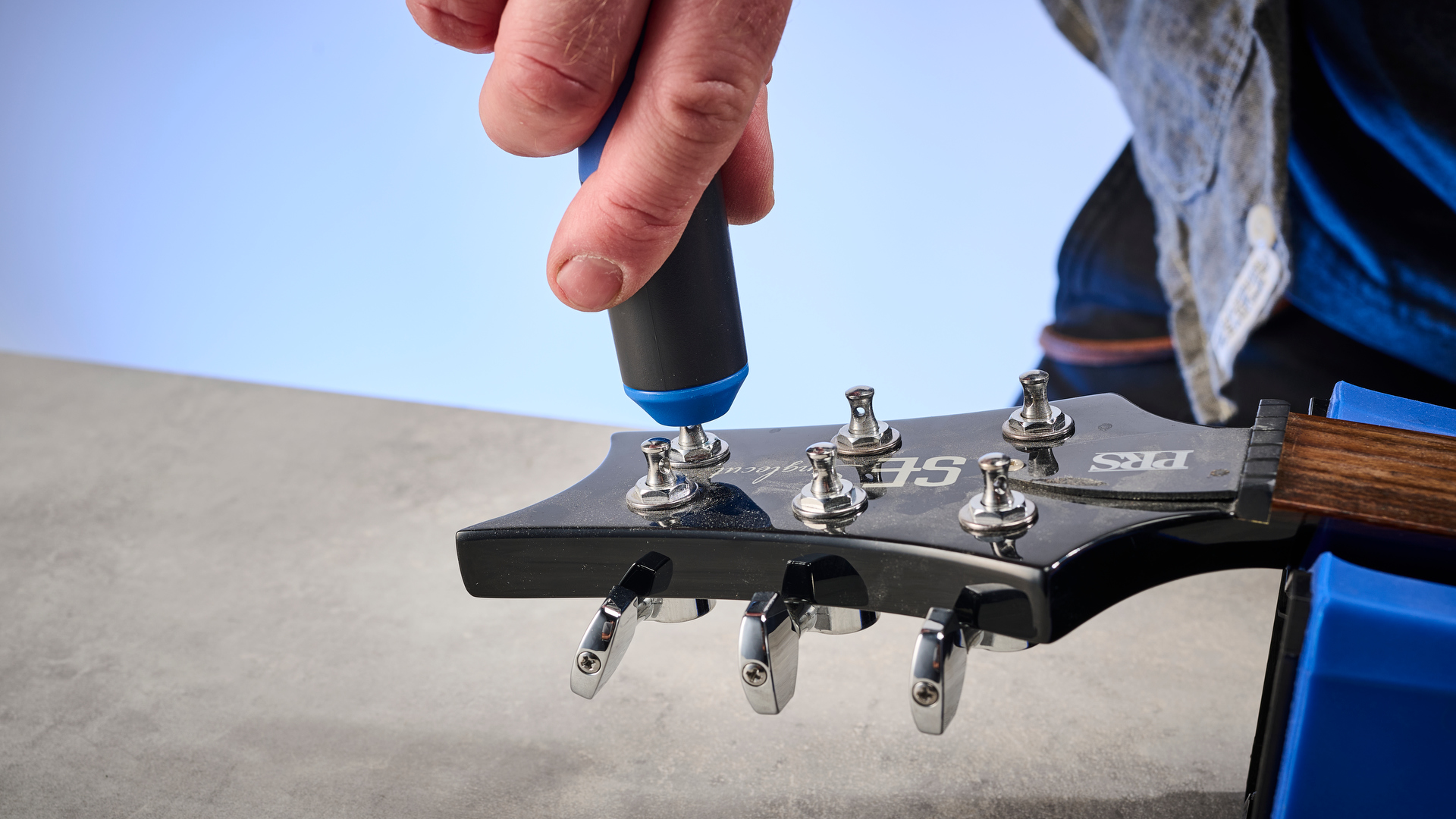
Checking and tightening your tuner nuts whenever you do a guitar string change is always a good routine to fall into. The handle of MusicNomad's GRIP Guitar String Peg Winder I'm using above also features a 10mm hex wrench for this very reason.
But the subject of string changes brings me to the next factor that can threaten your tuning stability…
Want all the hottest music and gear news, reviews, deals, features and more, direct to your inbox? Sign up here.
String winding and stretching
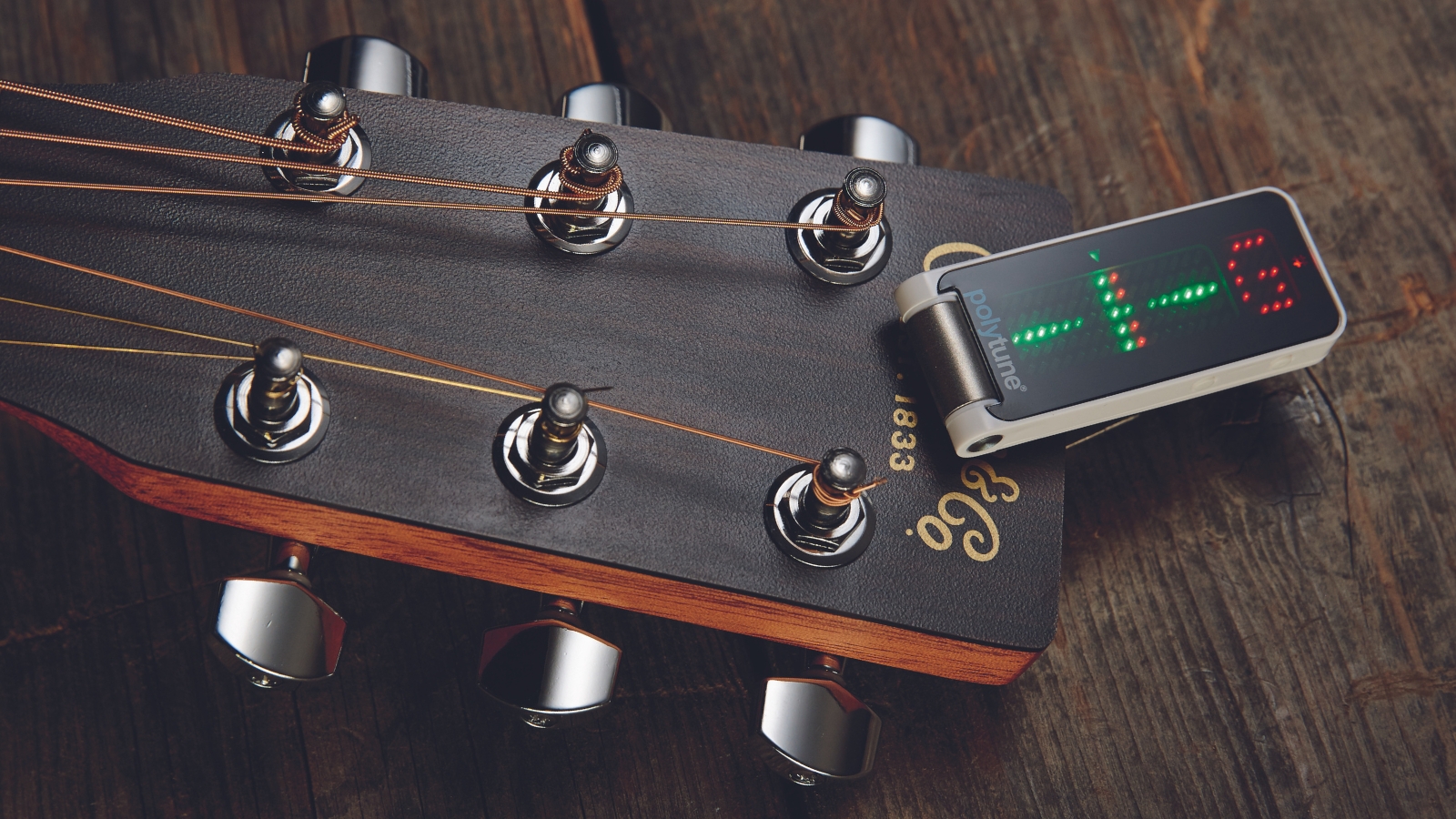
How we fit new strings affects string tension and in turn this does have a bearing on tuning stability. The way you wind your new strings to the posts is important – and if not done correctly you'll soon find you guitar going out of tune in the first few bends.
There are numerous approaches to string winding – and a lot of them will do the job well. But you don't need to tie any knots in your strings – tuners are designed to hold the strings in place. It's all about slack and winds here. Don't go beyond three to four wraps around the post on the wound strings (low E, A, D) or around five-six on the unwound (G, B, high E).
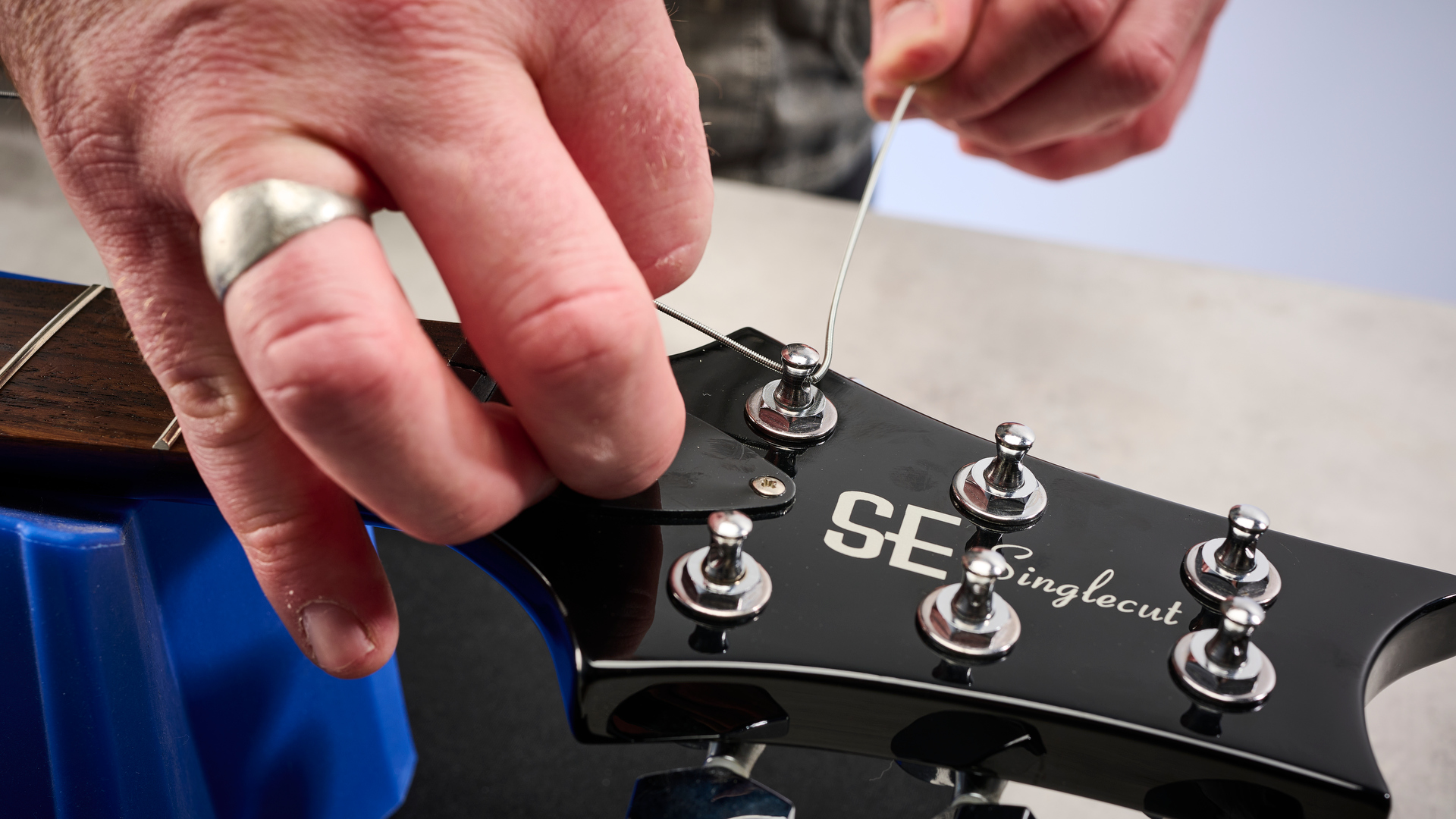
One good way to keep things consistent is to pull the string through the peg tight, then pull it back to the first fret to measure the right amount of slack needed for the wound strings and for the plain strings, pull them back to the guitar's second fret.
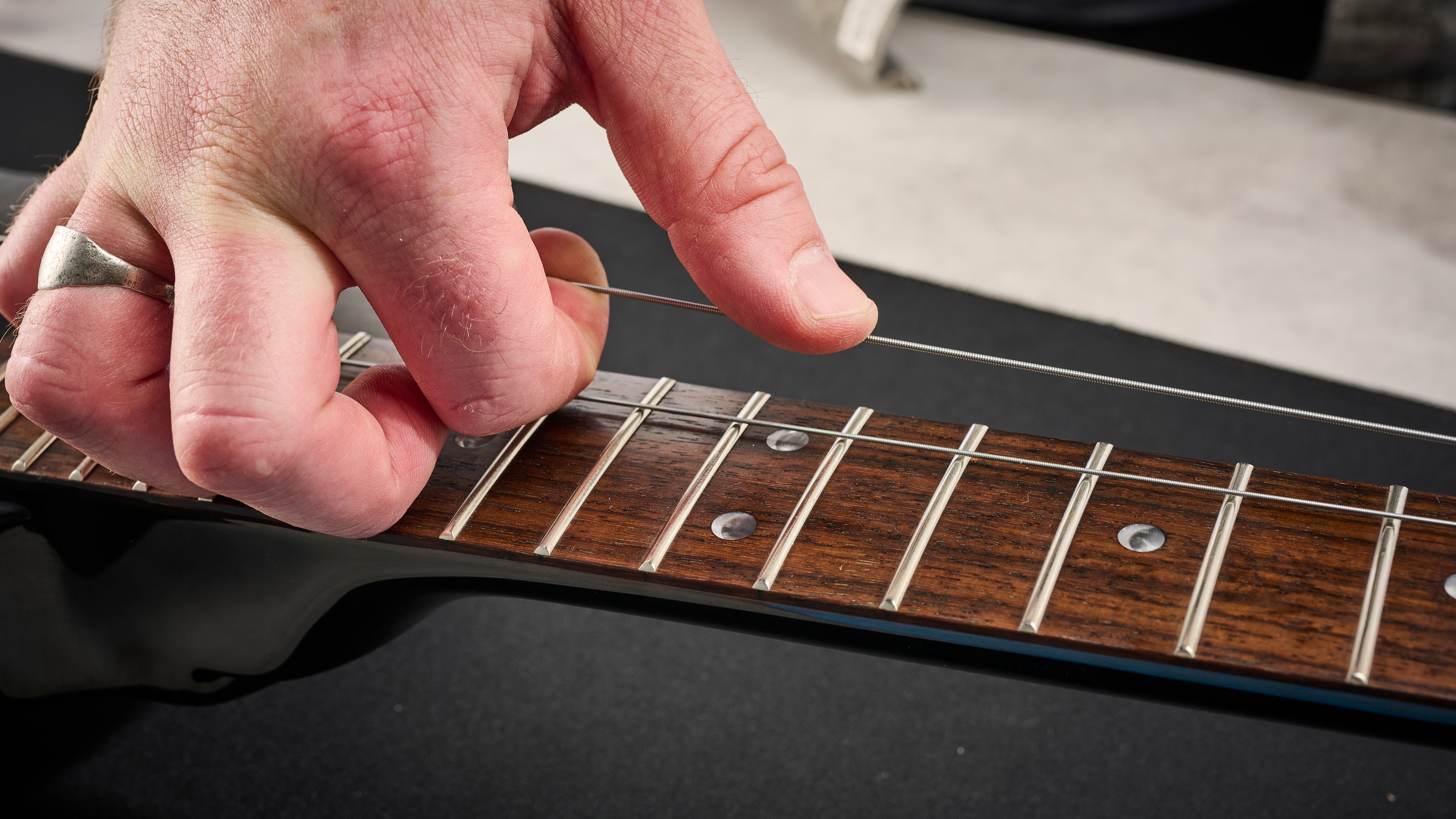
Stretching new strings is also important to get them staying in tune faster once fitted. A couple of pulls upwards at about the halfway point on the fretboard when you're in playing position after the new string is fitted will really help strings to settle in.
Nuts and contact points

Anywhere the string makes contact with the guitar can have an effect on tuning stability. What we want is unencumbered travel and string vibration – not restrictive debris and sharp edges. So the guitar's nut often comes into focus as a possible culprit for both tuning and string buzzing woes.
If the nut's slots are cut too narrow or low for the strings it can cause issues. In my experience, if you suspect your nut may have issues it's well worth taking it to a pro – a custom carved bone nut is money well spent and can also improve the guitar's acoustic resonance. Especially with an acoustic guitar. But there are ways you can improve the situation if things aren't as drastic as a replacement.
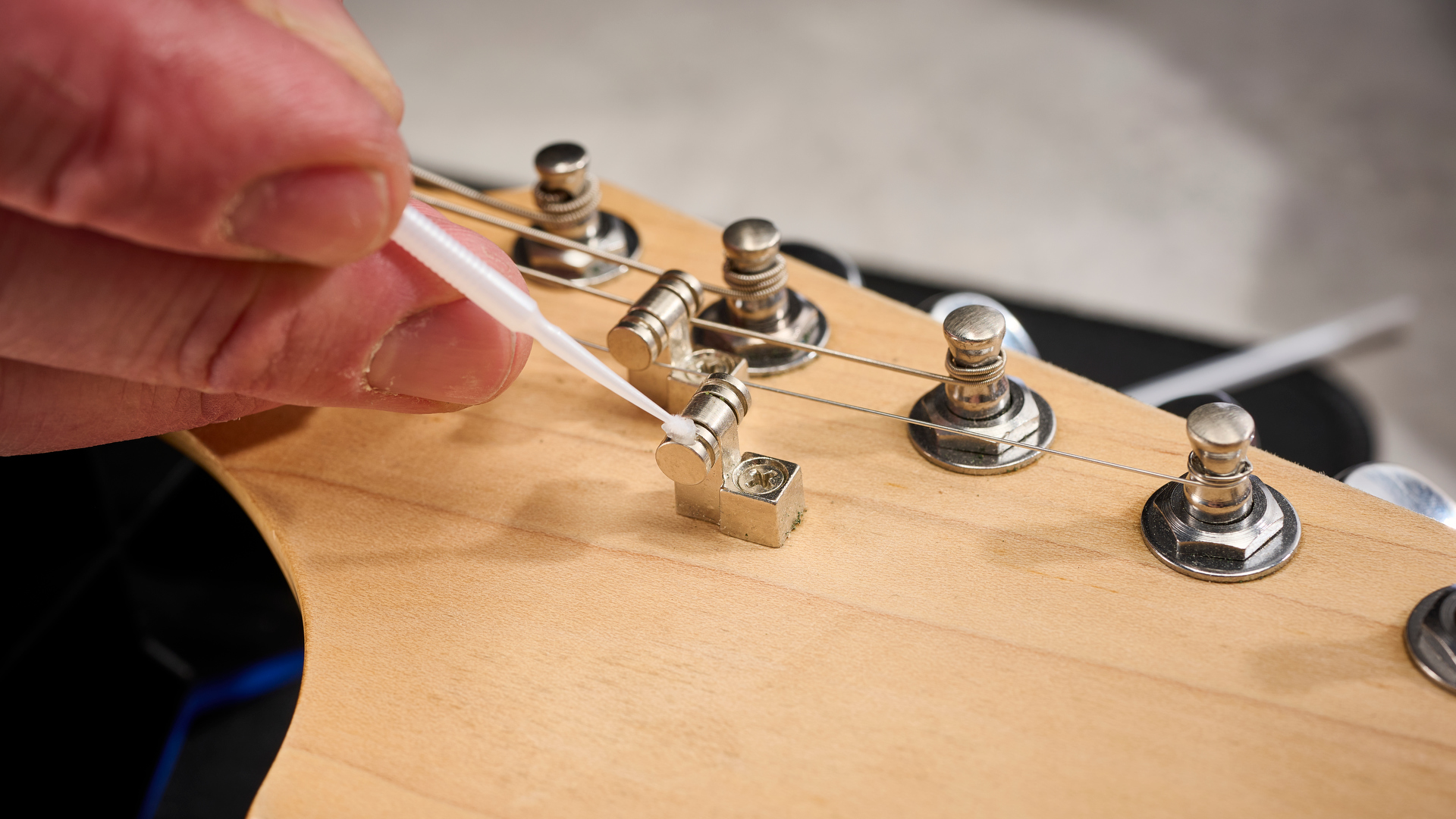
Every time I change my electric and acoustic guitars' strings, I take the opportunity to lubricate the hardware contact points. These are the string trees, nut slots and even the bridge saddle grooves. There are a few options on the market, including Big Bends Nut Sauce, but I use MusicNomad's TUNE-IT Nut & Saddle Lubricant, which comes with applicators to make sure nothing is wasted and a tube lasts a long time. You'll only need to apply small amounts.
In helping to reduce friction wherever there's movement between the guitar and the strings, it can reduce string breakage as well as tuning issues.
Intonation

Ever tuned your electric guitar and played up and down the neck but it still just doesn't sound tuned when you play notes in some positions? Then you tune it again and it's still not right? It's probably because it's not properly intonated. This is something you need to check and set regularly.
This is something I talked about before when we looked at how to adjust your guitar string action. When an electric guitar is properly intonated, every note on the fretboard will sound in its correct pitch. Adjusting the intonation of your guitar involves using its adjustable saddles at the bridge to lengthen or shorten the string lengths on your guitar. These adjustments will be very small but they can make a big difference on how in tune your guitar sounds.
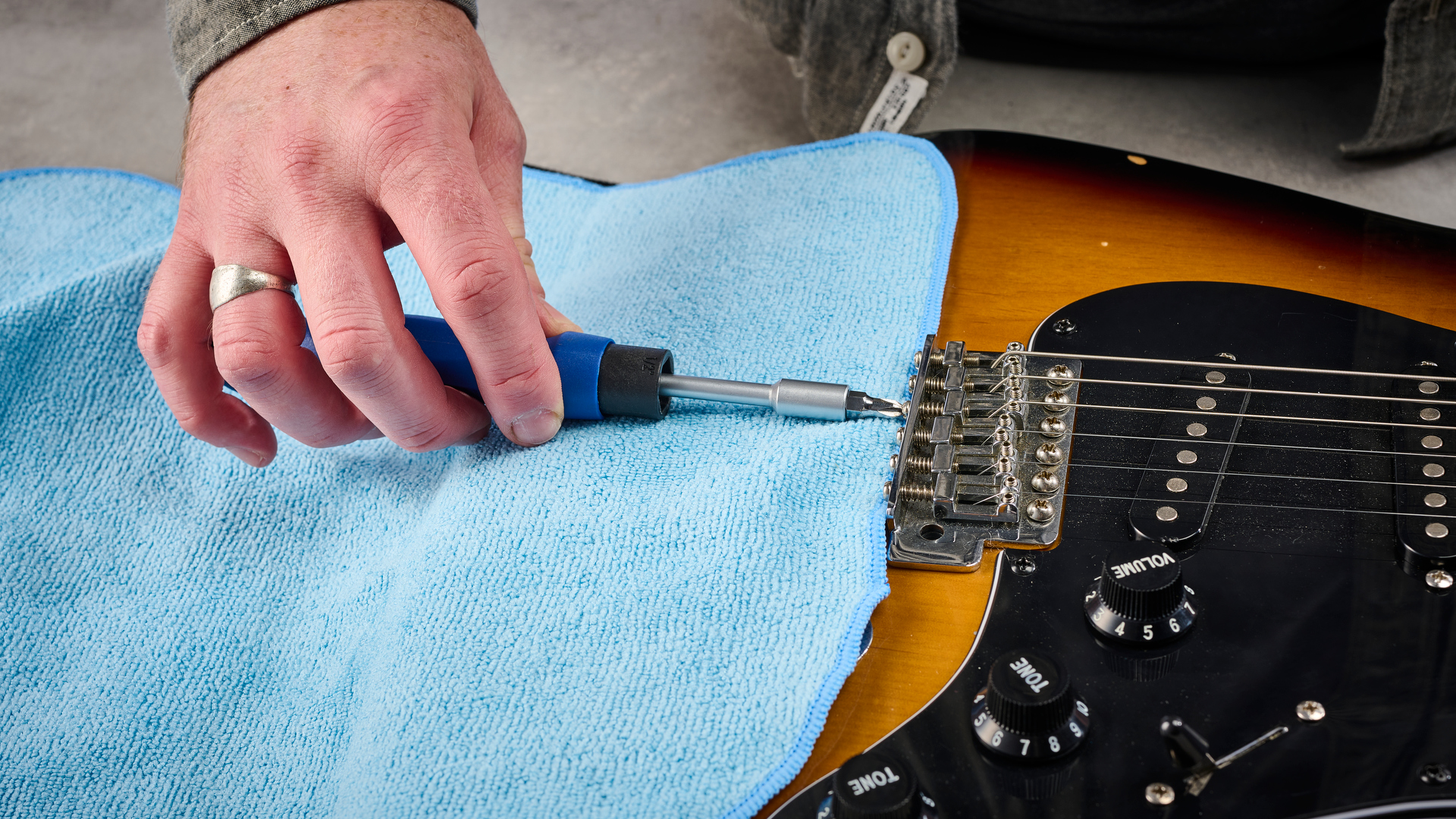
To check and improve your guitar's intonation play an in-tune open note on each string while plugged into a pedal tuner (for improved accuracy over a headstock tuner) and then compare it on each string when fretted at the 12th fret.
Make very small adjustments and take your time
If the pitch of the note is too high at the 12th fret you need to move the saddle back towards the bridge by adjusting with a screwdriver. If the fretted note is flat you need to adjust the saddle to move it forward towards the headstock.
Make very small adjustments and take your time, checking with the tuner each time. Absolutely perfect intonation is never possible because of the variables involved in guitars (minor differences between frets etc), but aim to get that tuner arrow to stay in the green for open and fretted 12th notes on each string. It's worth the effort!
- For more information about MusicNomad guitar maintenance and cleaning products visit MusicNomad, Thomann and Sweetwater.

Rob is the Reviews Editor for GuitarWorld.com and MusicRadar guitars, so spends most of his waking hours (and beyond) thinking about and trying the latest gear while making sure our reviews team is giving you thorough and honest tests of it. He's worked for guitar mags and sites as a writer and editor for nearly 20 years but still winces at the thought of restringing anything with a Floyd Rose.